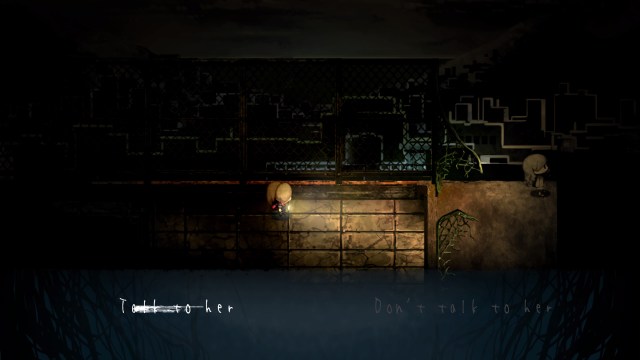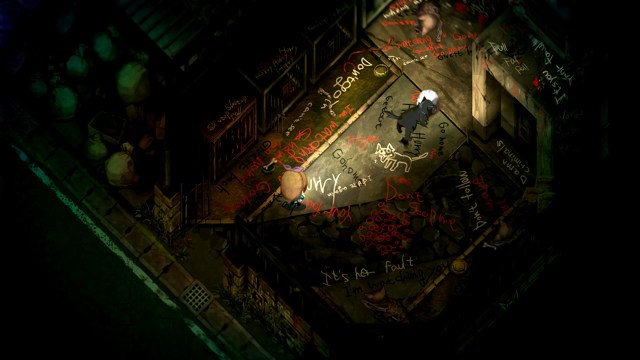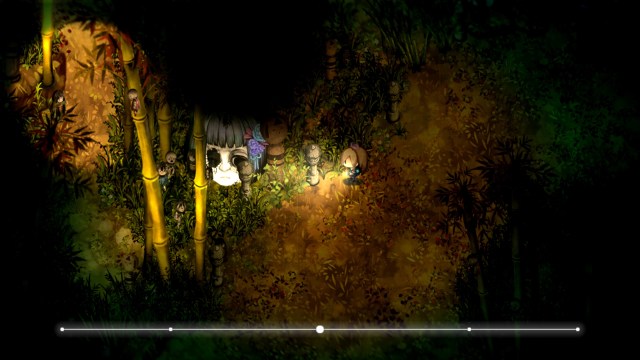A horrible night to have a curse
I wasn’t expecting a third Yomawari game. The first two games were two years apart, so I expected that they’d either remain at that pace or the series would simply end. Five years later, we have Yomawari: Lost in the Dark, and there hasn’t been a step missed. You almost wouldn’t believe this is five years removed from Yomawari: Midnight Shadows because the art and graphics are almost identical, and it features the same incremental tweaks that you’d expect.
And that’s for better or worse.
Yomawari might be my favorite horror game series around, and it’s not because the gameplay is exciting. Holy crap, it definitely isn’t. However, as far as horror games go, Yomawari knows how to do storytelling in a way that takes advantage of the interactive medium and incorporates its aesthetic. Sure, they’re not necessarily fun to play, but it’s a small price to pay for their wonderful narratives.
Nonetheless, if there’s one thing I hoped for in going into Yomawari: Lost in the Dark, it was that it would get its gameplay on a level that matches the talent demonstrated everywhere else. Well, small steps, I suppose.

Yomawari: Lost in the Dark (PC [Reviewed], PS4, Switch)
Developer: Nippon Ichi Software
Publisher: NIS America
Released: October 25, 2022
MSRP: $39.99
Since I feel that narrative is the ultimate reason to play Yomawari: Lost in the Dark, I’m going to try really hard to avoid spoilers. As you do in previous titles, you play as a young girl who has something bad happen to her in the opening moments of the game, then attempts to set things right. After the bad things happen, she’s told she is cursed, and the only way to undo the curse is to gather all her lost memories before 6a.m.
Whew! That was really difficult.
As was central to the previous two titles, this mostly involves wandering around the girl’s hometown in the dead of night armed with nothing more than a flashlight. The town is open and non-linear. You search for items that the girl strains to remember anything about, you’re then given a brief cutscene showing where she may have lost something. This lifts a fog wall somewhere in the world where you can now proceed into. Each area has its own problem and backstory, which you must solve or navigate in order to find the girl’s lost memory.
Always trust the dogs
The approach to storytelling will be familiar to anyone who played through the first two titles. Much of what Yomawari: Lost in the Dark tells you is obfuscated in one way or another. There’s no exposition, so little pieces are fed to you, and they’re often vague or unreliable. By the end of the game, as with the previous titles, you’re generally given enough pieces to put together a picture, but it’s anything but clear.
To me, the titles tend to be coming-of-age stories told through a horror filter, which is perfect. It may be about responsibilities or the pain of letting go, but the most pessimistic views of the world are used to frame it. Yomawari: Lost in the Dark continues this sort of storytelling and does so with the same deftness. It really doesn’t miss a beat.
On the other hand, I found the subject matter focused on in Yomawari: Lost in the Dark to not be as satisfying as the previous two games. To put it strangely: it’s less dark. It’s no less of a horror game, but here, the protagonist is mainly just learning lessons of courage, whereas the previous girls had to make sacrifices. Another way to put it is that Midnight Shadows set the bar too high, and it’s maybe not surprising that Lost in the Dark falls a smidge short.

Your eyes… Give them to me
Then there’s the actual gameplay, which I’m a little mixed on. While the exploration and light puzzle-solving of the Yomawari games are retained here, the action bits have been refocused. It’s largely a game of avoidance, which the previous games also had, but this time, it’s almost entirely that. Each of the game’s memories comes with a little part at the end where you run from something, and you have to follow specific dance moves to get to the end. The dance steps aren’t necessarily going to be well communicated, and if you die, you often get sent to the beginning of whatever scene you were in. In Yomawari: Night Alone, I actually found myself rage-quitting one of these parts, and I never got to that point in Yomawari: Lost in the Dark, but if you’re looking for any major refinement, you’re not going to find it.
What you will find is a lot of the same shortcomings. Much of the world is actually empty, leaving only what’s illuminated by your flashlight and the sounds of the night. From an atmospheric perspective, this works fine. However, the monsters are all just annoyances. You have to avoid them, and while this was partially done with the horror-proven hiding method in previous games, in Yomawari: Lost in the Dark, you cover your eyes. This has the advantage of allowing you to remain mobile while hiding from enemies, it also means that you move about as slowly as a frozen glop of meringue.

You will find something more important than me
Everything that made the first two Yomawari games special are here. The only problem is that nothing was added on top. This isn’t Yomawari: Plus One; it’s Yomawari: Another One. I wouldn’t even say it’s Yomawari: The Best One.
Still, if you enjoyed the first couple of titles, I don’t think you’ll be disappointed by Yomawari: Lost in the Dark. It’s a solid continuation of the series, even if it doesn’t hit the heights of Midnight Shadows. The whole trilogy is a unique take on horror, tying in childhood and dumping a whole barrel of relatable sadness. The greatest success the series has had is not just presenting the misery to the player but making them be an active part of it. So, I hope you’re ready to be miserable.
[This review is based on a retail build of the game provided by the publisher.]














Published: Oct 24, 2022 02:00 pm